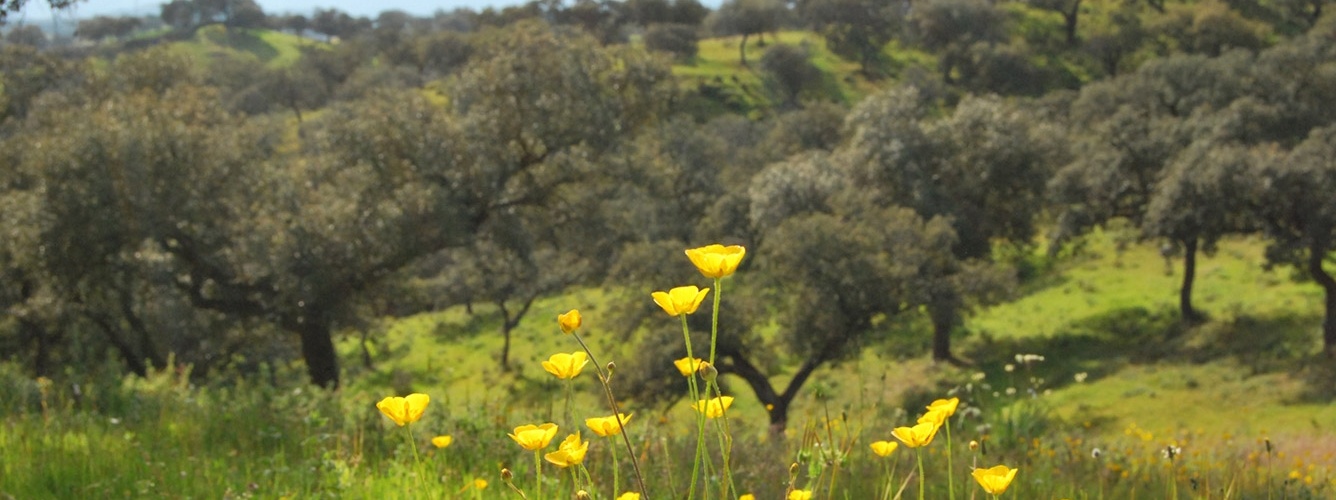

The Natural Monument: the holm oak and the cork oak of the Dehesa San Francisco
As a symbol for this antropomorphous agro-eco-system and in honor of generations of rural workers who helped to preserve this natural and cultural heritage, you find a centenarian holm oak at the entrance to the farm: impressive and luxuriant with an estimated age of 500 years. In 2003, the Government of Andalusia declared it a Natural Monument. One step away you find a cork oak – not less impressive - which in 2017 also was declared a Natural Monument by the Government of Andalusia.
 |
 |
Flora/Fauna/Biodiversity
The dehesa consists of numerous different natural habitats. Sunny grazing land, shady valleys with creeks, maquis and enchanted cork oak groves, rock formations and standing waters offer living space to many creatures. Not for nothing, the dehesas are considered a hotspot for biodiversity.
In springtime, a fragrant carpet of colorful blooming flowers and bushes covers the dehesa. Between rock roses, gorse and Spanish lavender we will find wild orchids, wild gladiolus, wild tulip, chess flower and peony – they all attract a wealth of insects.
The region is a NATURA 2000 site and as an Important Bird Area (IBA) of great importance. In the old tress we can find the lesser spotted woodpecker or the Eurasian wryneck looking for food; in the open landscape we can hear the crested lark and the corn bunting hum; the black stork, the white stork and the black kite go hunting at the numerous water places. Apart from songbirds, the dehesa offers good hunting grounds to several birds of prey. The short-toed snake eagle and the booted eagle are regular visitors. The red kite – who breeds in Central Europe – hibernates on the dehesa and shares the carrion with the black vulture and the grifffon vulture.
The tasty acorns of the holm and cork oaks draw red dear and wild boar and during the night, the fox, the European badger and the common genet roam through the dehesa looking for food.
Amphibians spawn in the numerous standing waters, for example, the Iberian ribbed newt, the southern marbled newt, the natterjack toad, the western spadefoot and several dragonflies.
The thermophilic reptiles are very well represented on the Dehesa San Francisco, e.g.: the ocellated lizard – the biggest lizard in Europe – and snakes like the ladder snake and the viperine water snake.
The entire Dehesa San Francisco is declared "Reserva Ecológica".
